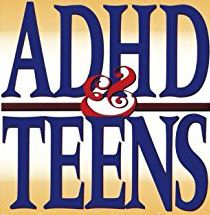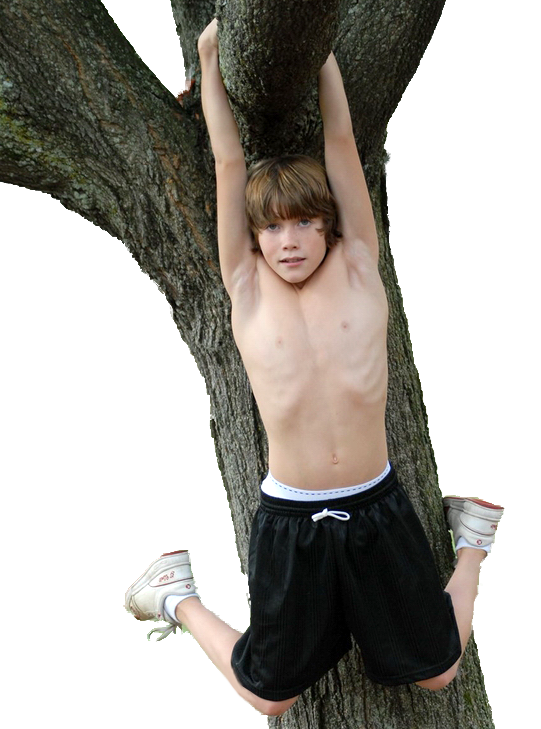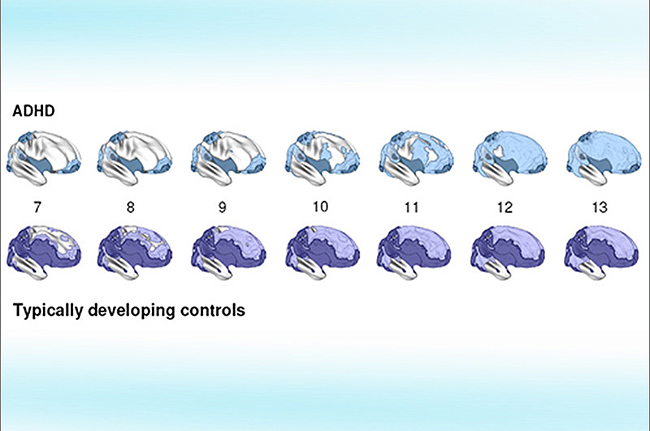Hyperactivity and Puberty – “ADHD on Testosterone”


The same holds true from my extensive series of articles about puberty—I didn’t mention how it is effected or even altered by hyperactivity.
Often, after the diagnosis of ADHD has been made, parents slowly settle into sort of a routine with their lives and peace gradually returns to the homestead. Then, when estrogen or testosterone begins to change their child’s puberty score from Tanner 1 into Tanner 2, it can be like they’ve never figured out anything before… at all… ever.
Puberty and Hyperactivity (ADHD), Both Difficult and Critital
Together—a ‘Perfect Storm’ looking for a safe harbor
A child who enters puberty usually becomes restless, aimless, impatient, unfocused and (except in rare relationships) sullen and onery. A child with ADHD usually is unfocused, impatient, restless, confused and challenging—notice anything?
And of course all of this is happening at a time when societal and educational demands come to a peak for all children, not just children with ADHD. The changes in personality during puberty are so similar, with or without ADHD, that frankly I’m hard pressed to say we know for certain kids with ADHD are any worse than any other child going through puberty.
And all pubescent children, ADHD or not, benefit greatly from having a pre-prepared and developed “safe harbor” of coping mechanisms; learned behaviors and attitudes; and “mentors” or “life-coaches.”
Puberty in Boys and Girls
Perhaps as much as two years before either a girl or boy’s body begins to change, the pituitary begins altering their hormone balance in a big way and parents begin to notice the harbinger of great things to come—merely by the change in the child’s attitudes and personality.

Once you notice changes in their bodies it’s getting pretty late in the timeline to start setting up the kind of relationship needed to be the mentor your child needs through puberty; so, you better get started… in earnest.
The first physical sign of puberty in your daughter is the development of breast buds; the first sign of physical puberty in boys is the enlargement of his testicles. If you’ve already taken the many opportunities most children give you to start talking about bodies and growing up, it’ll be easy not to miss those two items.
If you take them into their pediatrician at this time he’ll likely inform them that they’ve now passed from Tanner I (hormonal changes) into the Tanner II stage of puberty (physical changes)… and there’s more to come.
Laying good groundwork beforehand takes the stigma away from the child using his/her parents as their resource for discussion about their changing body; especially at a time when it becomes “not cool” to talk to their parents.
And, if you do make the effort, it’ll surprise you that a good number of them (maybe even the majority) will nonchalantly drop information about vaginal and penile development, hair growth, hygiene concerns and even menstrual and erection issues into casual conversation sometime when you’re alone with them. Really!
That only occurs, as I’ve said, if you’ve already initiated conversations about their body, using correct language in a stress-less conversational tone, and they’ve found you to be forthright, honest and (perhaps most of all) NON-embarrassed or embarrass-ING.
Without being secretive or making it a production, you fit into your conversation what they can expect to happen to their body, explain that they should watch for it and give them permission to tell you when it happens so you’ll know how best to help them in their life.
It might amaze you that those children who see you as an ally and have a track record of talking to you about such things, will actually do it.
If they forget, remind them what they should be watching for and give them the opportunity to tell you about it. If they don’t then you can ask directly; but, in either case be ready, with confidence and matter-of-factness, to acknowledge their “accomplishment” and give them some next landmark that will engage them in another conversation down the line.
That’s what I do when I see them for their yearly checkups; so, don’t forget to keep their appointments—in this endeavor it’s good to have allies.

However, not all doctors are the same and you should be able to tell whether the doctor is actually interested in being YOUR asset in this endeavor; hopefully, you can find one who is.
ADHD, hyperactivity in Boys and Girls
If you can keep up with all the labeling changes over the years in what we’re now calling ADHD you’re better than most. It seems like every other year they’re re-defining and re-naming the condition we used to simply call hyperactivity.
Attention Deficit Hyperactive Disorder (ADHD) has several major symptoms, which may or may not occur in any particular child, and many of them are merely delays in neurological maturation.
Big example: all children have short attention spans and are easily distracted to begin with but “grow out of it” fairly readily in elementary school—those with ADHD take longer. Some, a lot longer. Some, develop coping skills to live with it.
And, there are many other issues making up a constellation of symptoms for each particular child—largely neurological.
The rub is that, even though the brain and thought-processes are being delayed, the physical and hormonal part of growing isn’t; which, creates a big disconnect with growing up and coping—THAT is the area where raising a child with ADHD going through puberty is different from one without it.
The mentoring, patience, helping to focus, continual reinforcement, family rules and traditions are not only more important in the extreme; but need to last longer as well.
Puberty in a child with hyperactivity is NOT different than in a child without ADHD; AND the ADHD doesn’t change, it just intensifies the need for effective mentoring and friends in order to provide direction and opportunities to experience successes.
That, for most parents, is enough to be going on with. It takes not only teamwork, planning and persistence but some amount of sheer luck as well.
The Cause Of The Delay: New Evidence

Incredible evidence was just published this year about what specifically happens in the brain of maturing children; both those with ADHD and those without.
New imaging technology is able to take two or more scans of brains and compare 40,000 exact points in them over time to show any alterations or changes.
A doctor named Shaw did just that with 446 children 6 to 16, half with ADHD and half without, all during their brain growth to maturity—with important findings.
Watching the children’s brain’s neurons grow in thickness, they discovered that the age at which 50% of the 40,000 points reached their maximum thickness was about 7½ years for the 223 children without ADHD.
The children with ADHD did fully progress in the exact same order; but, didn’t reach that point until they were 10½—three years later.
This new study didn’t teach us anything new, except it validates what we already suspected and gives us insight about why the things we’ve been seeing are happening.
Then why are we so excited about this? Because the areas of the brain which are delayed are those in the prefrontal cortex we know are responsible for: memory, attention focusing, higher-order motor control and the ability to suppress inappropriate responses and thoughts.
AND… the region which developed faster was in the motor cortex; which, combined with the delay in the higher-order motor control, could explain why fidgetiness and restlessness are so common in ADHD.
Girls and Boys

So, enough with the research rhetoric, what about when the “rubber hits the road”… you know, in the real world?
Boys
Even though we don’t see that boys have any greater problem coping with puberty than others, there are some significant real-world issues. For example: like everyone else they want to feel like “one of the gang” but taking medication at school doesn’t make them fit in. They want to gain independence but are much slower to mature, perhaps even 30% or 3-4 years behind.
Then, add that to impulsivity and you’ve got a mound of risky behaviors just waiting in the wings. If the regular “gang” doesn’t fit them, then the “wrong-gang” usually will—especially if they are willing to experiment with drugs and alcohol.
Girls
Girls experience the same surge in body changes, except in most cases earlier than boys. And, just like boys, those with ADHD can have the same overwhelming and confusingly large difference between chronological and maturity ages.
Plus there’s the onset of the bi-weekly hormonal cycle between estrogen and progesterone. Even subtlety lower estrogen levels are linked with memory, cognitive difficulties and depression. Girls who once “aced” school can suddenly struggle, forget and barely pass. ADHD symptoms might seem to wax and wane.
Both girls and boys need to learn what to expect and that you understand, still accept them and are on their side working to help them be the best they can be.
❧
Enough with the back-story. Enough with the problems! What do we do about them? How can we help when our child refuses medicine… or struggles with peer pressure… or, seems confused or lets hygiene go or seems depressed?
No one can list the specific issues your child and family will deal with any more than any author can write a book specific to any one person’s life story; but, in part two of “Hyperactivity and Puberty” we’ll list the common issues seen and the general principles to follow in order to tailor your approach to your child.
14 Posts in ADHD Hyperactivity (hyperactivity) Series
- Hyperactivity & Puberty - Part 2, Issues and Actions – 22 Jan 2019
- Hyperactivity & Puberty - Part 1 – 10 Jan 2019
- The Children - Followup and Outcomes – 26 Mar 2017
- (Link) Don't JUST take my word for it – 23 Feb 2017
- Treatment: Cognitive Training, Medication – 18 Feb 2017
- Treatment: Five Pillars of ADHD Treatment – 4 Feb 2017
- Treatment: How can we know what works? – 29 Jan 2017
- (Video) Sucess in 'Something' Helps – 20 Jan 2017
- The Patient – 15 Jan 2017
- First, the diagnosis – 11 Jan 2017
- Labels and 'Alphabet Soup' – 7 Jan 2017
- Treating ADHD lowers incidence of smoking! – 15 Jun 2014
- Treatments - 'alternative' – 6 Feb 2013
- ADHD Hyperactivity: Intro/Index – 5 Feb 2013
